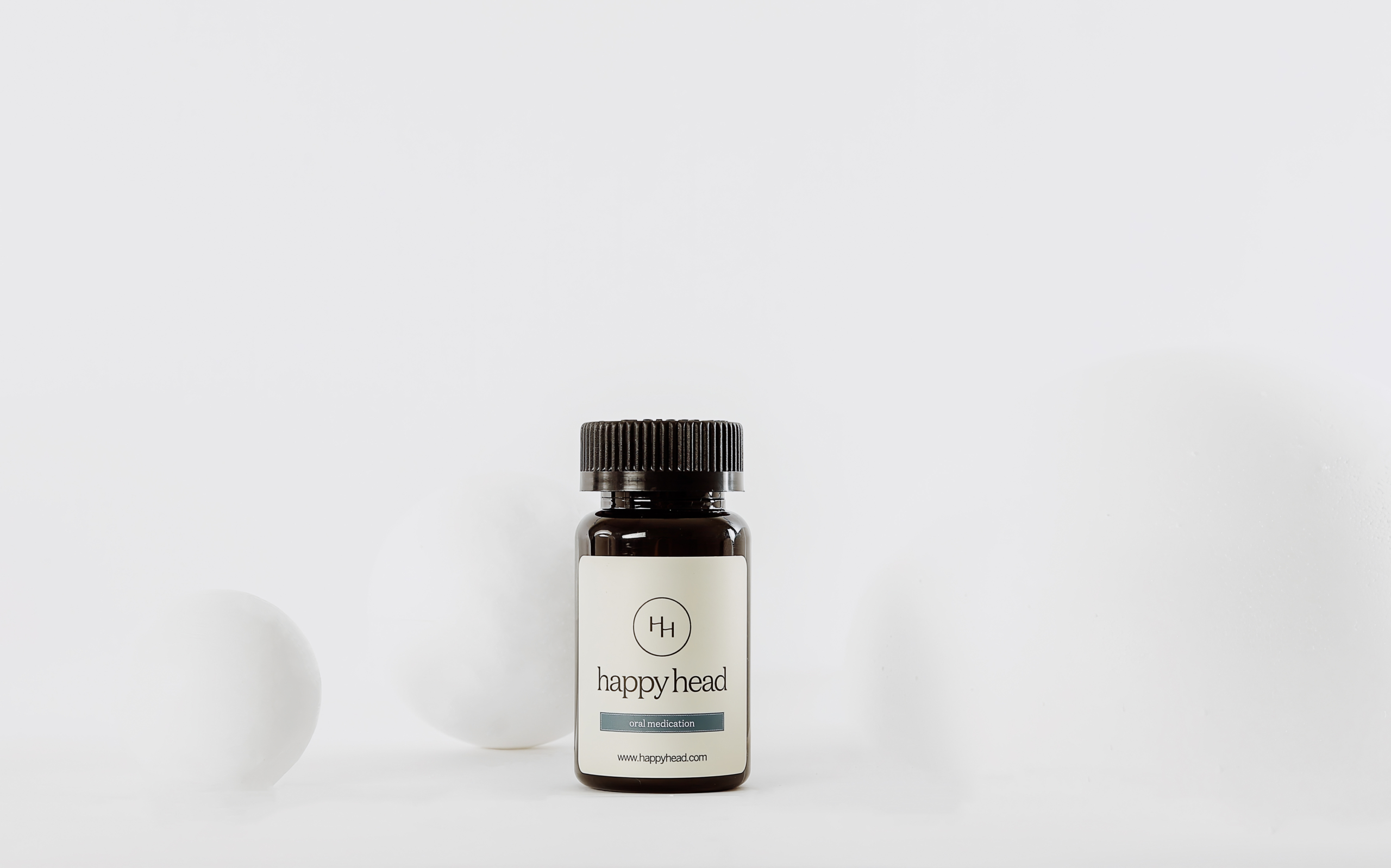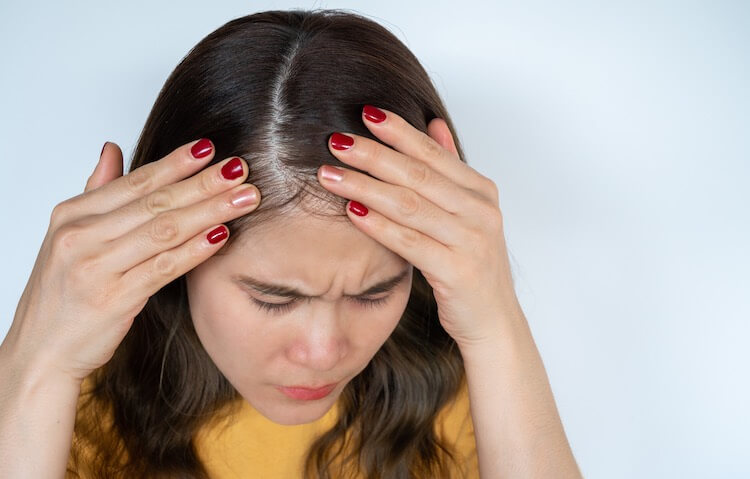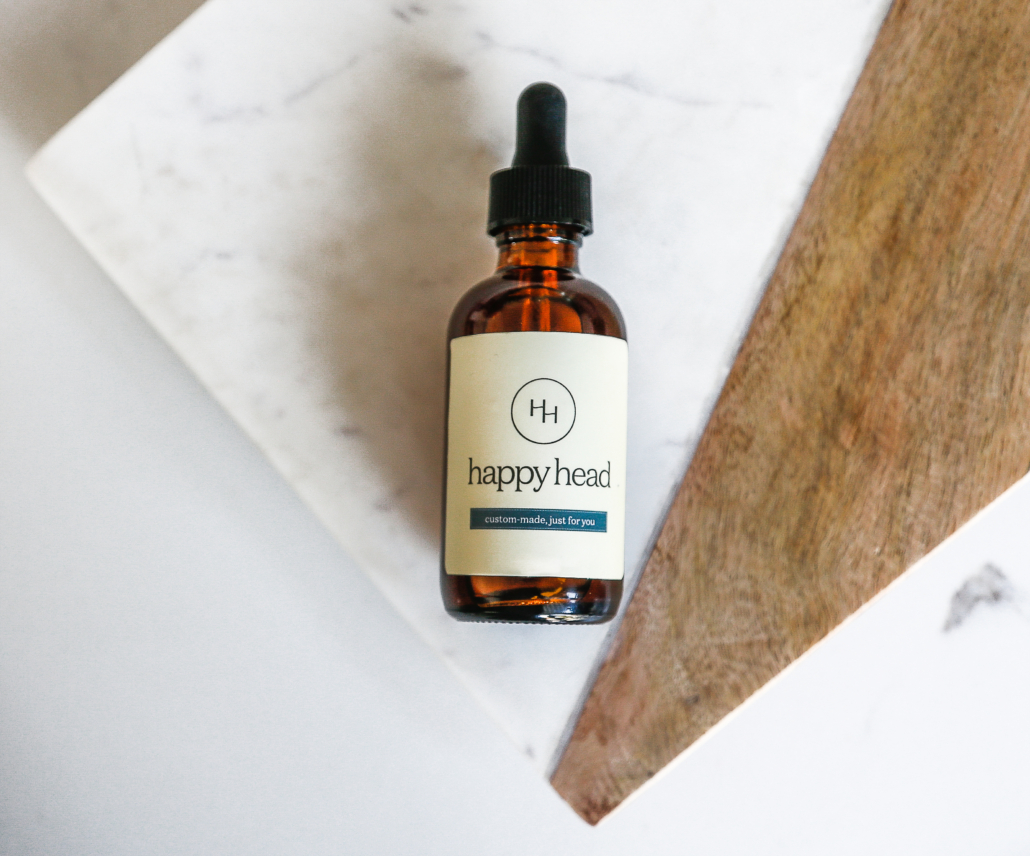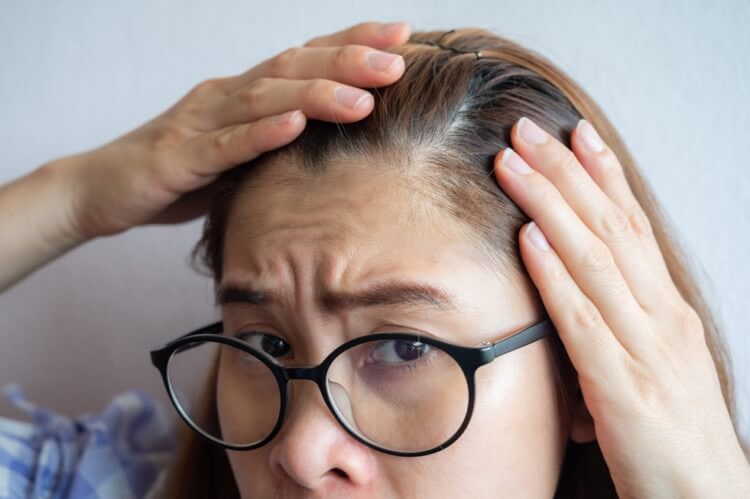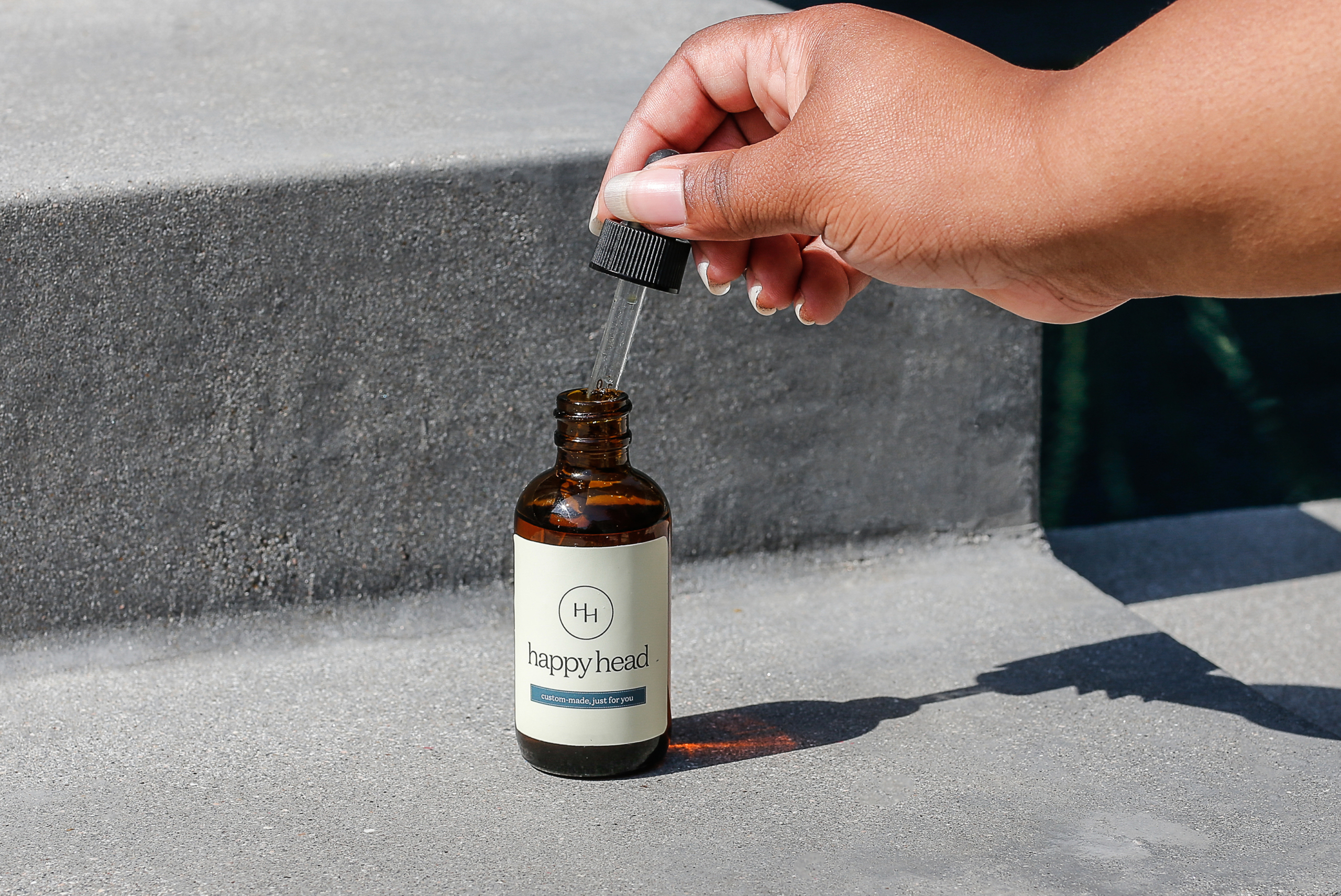Introducing New SuperCapsule™ Spironolactone Formula

Girls may run the world, according to Beyonce, but when it comes to hair loss medications, there isn’t much out there designed specifically for us. Minoxidil, Finasteride, and Dutasteride, the strongest prescription hair loss treatments available up until now, were all initially tested and marketed to men. The medications were later tested on women and deemed safe and effective. If you’re thinking it’s time that someone designed and sold a product specifically for women with genetic hair loss, you’re right. After all, female pattern baldness is the leading cause of hair loss among women, affecting up to 38 percent of all women. (01) That’s why we’re excited to introduce Happy Head’s new SuperCapsule™ Spironolactone Formula.
The Strongest FDA-approved Prescription Hair Regrowth Ingredients for Women In a Single Daily Capsule
SuperCapsule Spironolactone combines Spironolactone with Minoxidil and Vitamin D3 into an easy-to-take capsule taken once daily. Each capsule contains 25 milligrams of Spironolactone, 1.25 milligrams of Minoxidil, and 2,000 units of Vitamin D3.
Why Millions of Spironolactone Prescriptions are Filled Each Year
Spironolactone, sold under the brand name Aldactone, has been getting a lot of press lately as a treatment for stubborn hormonal acne that doesn’t respond to other prescription medications. The medication isn’t new, though. Spironolactone was initially tested and marketed to treat the fluid built-up that causes heart failure, liver scarring, and kidney disease. It has been around since 1955. In 1969, researchers noticed Spironolactone’s antiandrogenic effects. They discovered that Spironolactone works in two ways. First, it’s a diuretic that helps your body excrete extra fluid. It’s also an anti-androgen that reduces the effects of testosterone in your body. The medication is especially effective in treating thinning and hair loss among women under 50. (02)
Hormones & Hair Loss Treatments for Women
Let’s talk about how Spironolactone works to reduce shedding and regrow your hair. Female pattern baldness is an inherited genetic condition similar to male pattern baldness. Although men have higher amounts of testosterone than women, testosterone exists and functions similarly in both sexes. In both men and women who are genetically predisposed to lose their hair, testosterone converts to Dihydrotestosterone (DHT). DHT can attack and shrink your hair follicles. When that happens, the hair growth cycle is disrupted. Healthy new hair is replaced by thinner hair until the follicles eventually close off and hair stops growing. Spironolactone reduces total testosterone levels, so less testosterone is available to convert to DHT. It also blocks androgenetic receptors in the hair follicles. Yes, Spironolactone is capable of blocking testosterone in both men and women. However, Spironolactone can cause breast enlargement and other undesired antiandrogenic effects in men.
Better Together: Spironolactone in Combination With Minoxidil & Vitamin D3
Now, about how Happy Head’s Spironolactone got its superpowers. Not only can Spironolactone be combined with other hair loss therapies, research indicates that Spironolactone has better efficacy when it’s combined with either oral or topical Minoxidil. (03) In this case, more is better. While Spironolactone blocks testosterone production, Minoxidil enlarges the hair follicles, allowing thicker, healthier hair to emerge.
And then there’s Vitamin D. According to findings published by the National Library of Medicine, Vitamin D plays a significant role in hair growth. Studies indicate that there is a relationship between Vitamin D deficiency and androgenetic alopecia, which is another name for male and female pattern baldness. (04) The organization also estimates that over 40 percent of the population has a Vitamin D deficiency. Replacing this essential vitamin is key to supporting healthy hair growth.
Spironolactone Balances Hormones That Cause Hair Loss
Spironolactone helps restore hormonal balance by blocking androgen receptors and reducing androgen production. Not only does the medication promote a more favorable environment for growth among women genetically predisposed to female pattern hair loss, it’s been found to be particularly beneficial for women with Polycystic Ovary System (PCOS). Hair loss among women with PCOS is common due to excess androgen production that’s characteristic of the condition.
Spironolactone is Safe and Effective
Spironolactone is generally considered safe for hair loss treatment when used under medical supervision and at appropriate dosages. The higher the dosage of Spironolactone, the greater chance of side effects such as fatigue, dizziness, and breast tenderness. Side effects typically subside after the medication is discontinued. Although Spironolactone has a short half-life which means it clears your system quickly after discontinuing use, Spironolactone is not recommended to women who are pregnant or are planning to become pregnant. As with any prescription medication, always consult with a licensed healthcare professional before using any medical treatments or combination therapies for hair loss.
Begin Seeing Results in 3 to 6 Months
Within three to six months, you may see signs of growth. At that point, however, it’s still early in the process. Studies indicate that the best results are seen after a year of continual use.
Want to Regrow your Hair?
Want to find out if SuperCapsule Spironolactone, Minoxidil, and Vitamin D3 formula will work for you? Happy Head has dermatologists licensed in every state available to review your medical history and provide a no-cost consultation. If you’re a good candidate, your prescription will be created and shipped directly to your front door. Have questions after you receive your order? We’re always here to help with ongoing support. Simply contact us and start your online quiz and tell us about your hair to get started.
Resources:
(02) Note: Spironolactone is not recommended for women who are pregnant or planning to become pregnant. Always consult with a licensed medical professional before considering any medical treatments or combination therapies for hair loss.
(04) https://pubmed.ncbi.nlm.nih.gov

